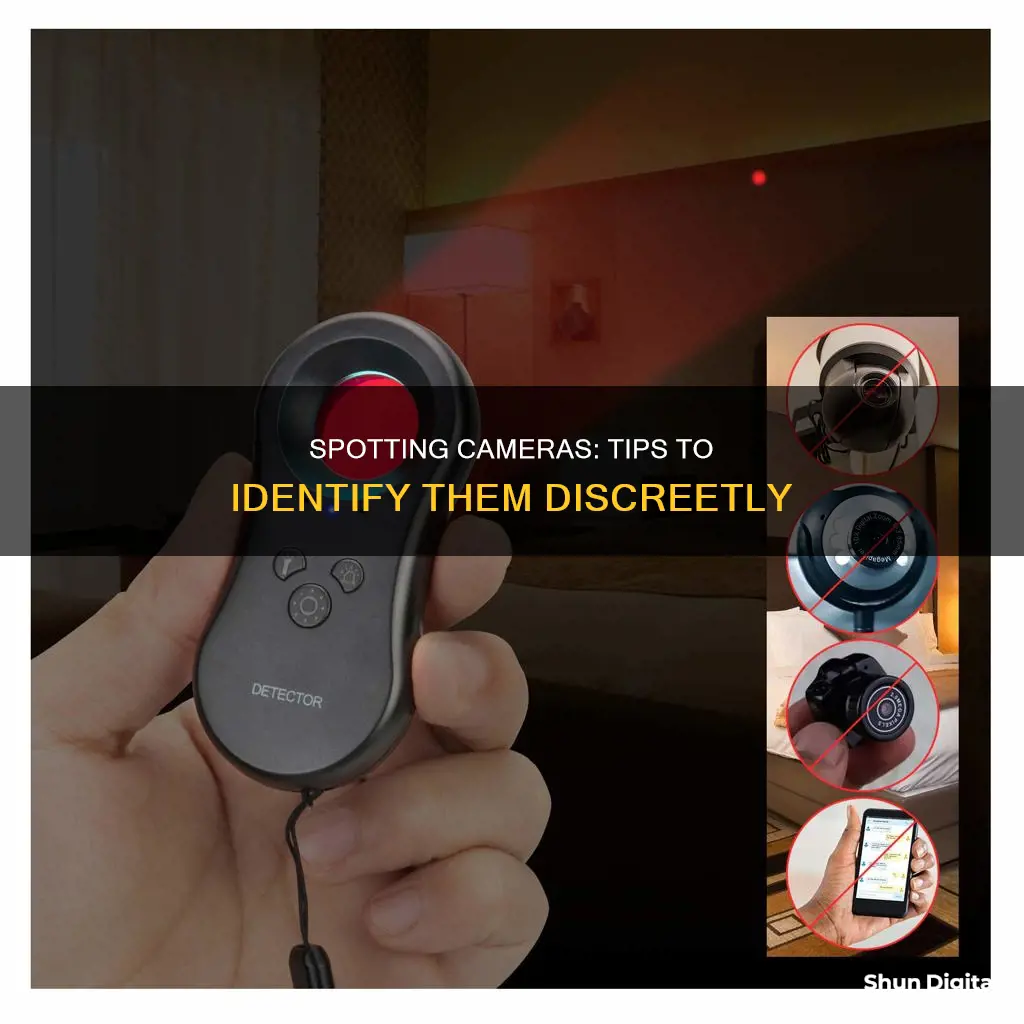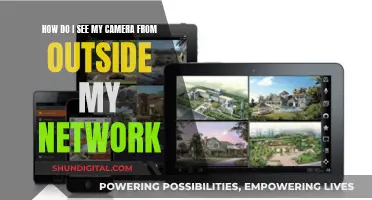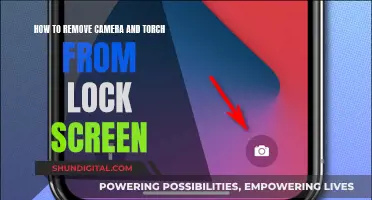
Hidden cameras are a real danger and can be found in a variety of places, from hotel rooms to public restrooms. They can be hidden in everyday objects such as smoke detectors, clocks, USB hubs, and even wireless chargers. If you're concerned about your privacy and want to know how to spot hidden cameras on the spot, here are some effective methods:
- Manual Inspection: Carefully inspect common hiding spots such as walls, outlets, toys, decorative items, and wires. Use a flashlight to look for tiny reflections that could indicate a camera lens.
- Smartphone Camera and Apps: Use your smartphone's camera to detect infrared lights, which are often used in hidden cameras for night vision. You can also use apps to scan the Wi-Fi network for unknown devices or those identified as cameras.
- Turn off the Lights: Hidden cameras often have red or green LEDs that blink or shine in low-light conditions. Turning off the lights and using a flashlight can help spot these indicators.
- Wi-Fi Network Scanning: Hidden cameras may be connected to Wi-Fi for remote viewing. Check your router's admin panel or use a Wi-Fi scanning app to look for unrecognized or strangely named devices.
- Use a Radio Frequency (RF) Detector: RF detectors provide an audible or visual alert when they detect a hidden camera's signal. Unplug other electronic devices to minimize interference and carefully scan the room for potential cameras.
- Infrared Scanners: While not foolproof, infrared scanners can detect the invisible infrared light emitted by some night vision cameras. Sweep the room in darkness and look for faint glowing spots that could indicate a camera lens.
- Bluetooth Scan: Put your Bluetooth in pairing mode to detect devices connected via Bluetooth. Look up strange device names to see if they match camera product numbers or identifiers.
| Characteristics | Values |
|---|---|
| Size | Very small, as small as the end of a pen |
| Shapes | All kinds |
| Colours | All kinds |
| Disguised as | Smoke detectors, peepholes, mirrors, electrical outlets, power strips, light fixtures, bookshelves, laptops, small holes in the wall, pictures, stuffed animals, plug-in air fresheners, doorbells, clocks, alarm clocks, USB chargers, wireless chargers, pinhole, keychain, a screw, etc. |
| Camera lens | Always visible |
| Lights | Red or green blinking or steady lights |
| Wi-Fi | Connected to Wi-Fi so they can be viewed remotely |
| Sounds | Inaudible buzz |
What You'll Learn

Turn off the lights and look for blinking lights or reflective surfaces
Turning off the lights and looking for blinking lights or reflective surfaces is a great way to spot hidden cameras. Most cameras have small blinking red or green lights, which may be visible when the room is dark. These lights may indicate that a camera is on and recording. However, this method is not foolproof, as some cameras may not have such lights, or they may be well-hidden.
Another way to spot hidden cameras is to look for reflective surfaces. All hidden cameras have a camera lens, and these lenses can sometimes be spotted by looking for reflective surfaces where they shouldn't be. A good way to do this is to use a flashlight. Turn off the lights and shine the flashlight around the room, looking for reflective surfaces. You can also use your phone's flashlight and camera. Look around the room through your phone's front camera with the lights off; your phone may be able to pick up small, red dots of infrared light coming from a hidden camera.
Restore Camera DVR Footage After Power Outage
You may want to see also

Check for objects that seem out of place
When looking for hidden cameras, it's important to be vigilant and thorough. Scan the room for items that seem out of place, such as pictures hung too high or decorations in odd locations. Mirrors, pictures, and paintings often can't be placed just anywhere, so if you see them at a weird height or in an odd location, there may be a hidden camera embedded.
Check to see if a mirror is two-way to confirm whether or not a camera is embedded, as this is a common way to hide a camera.
While things like stuffed animals and books can be placed pretty much anywhere, it's worth paying attention to where they are positioned. If a stuffed animal is placed in an odd location, such as on a shelf or desk, it could be worth checking if a camera is embedded.
Other items to be cautious of include electrical outlets and power strips, light fixtures, bulbs, and night lights, small holes in the wall, laptops, USBs, computer mice, peepholes, doorbells, and plug-in air fresheners.
Hidden cameras can be as small as the end of a pen, so it's important to check anywhere a camera might be able to hide.
A Simple Guide to Viewing IPUX Cameras
You may want to see also

Use a flashlight to find camera lenses
Using a flashlight is a great way to detect hidden cameras. The flashlight method works on the principle that the camera lens must remain visible for the camera to be effective.
Step-by-Step Guide:
- Turn off the lights: Start by turning off all the lights in the room. This will make it easier to spot any reflective surfaces that could be camera lenses.
- Use a flashlight: Turn on a flashlight and scan it around the room slowly and carefully. You can use a regular flashlight or the flashlight on your phone. Keep the flashlight at eye level as you scan.
- Look for reflective surfaces: As you shine the flashlight around, keep an eye out for tiny blue, purple, or white reflections. These reflections will shine when hit by a ray of light and indicate the presence of a camera lens.
- Investigate suspicious areas: If you spot any reflective surfaces, investigate further. Move the flashlight around the area to see if the reflection moves or changes in a way that suggests it could be a camera lens.
- Use a lens or mirror: If possible, use a camera lens or a mirror to enhance your view and get a clearer picture of the reflective surface.
- Check common hiding spots: Pay close attention to common places where hidden cameras may be located, such as smoke detectors, peepholes, mirrors, electrical outlets, and small holes in the wall.
- Listen for unusual sounds: While you're searching, also listen for any faint buzzing, feedback, or other unusual sounds that could indicate the presence of a hidden camera or microphone.
- Document your findings: If you locate what you believe to be a hidden camera, document it by taking photos or videos. Avoid touching or attempting to remove the camera, as this could destroy valuable evidence.
Additional Tips:
- Create a DIY camera detector: You can make your own camera detector by using a paper towel roll and a flashlight. Hold the paper towel roll up to one eye and close the other eye. Shine the flashlight at eye level in front of the closed eye and scan the room for glints or reflections.
- Use infrared light: Some smartphones have infrared capabilities that can help detect hidden cameras. Use your phone's camera to scan the room for small bursts of steady or flashing infrared light, which may indicate the presence of a hidden camera.
- Check for out-of-place objects: Look for decorative items or objects that seem out-of-place, such as random stuffed animals or clocks. These items could be used to disguise a hidden camera.
- Test mirrors: Place your finger against mirrors to check for two-way mirrors or hidden cameras. If there is a gap between your finger and its reflection, it's a regular mirror. If your finger and its reflection seem to touch tip-to-tip, it could indicate a two-way mirror or a hidden camera.
Remember, while the flashlight method is effective, combining it with other detection methods will increase your chances of spotting hidden cameras. Stay vigilant and trust your instincts!
Chinese Cameras: Watching People, Invading Privacy
You may want to see also

Scan the Wi-Fi network for unknown devices
Scanning your Wi-Fi network for unknown devices is a crucial step in maintaining network security and peace of mind. Here are several methods to help you detect and remove any unauthorised devices that may be connected to your network:
Use a Router App
Most routers manufactured in the past five years have a corresponding app that allows you to manage settings and view connected devices. These apps can also be used to remove unknown devices. Alternatively, you can log in to your router directly from a computer or smartphone using the router's IP address. If you are using a router provided by your Internet Service Provider (ISP), they may be able to provide information about connected devices.
Use an IP Scanner
An IP scanner is a tool that can be used to identify devices connected to your Wi-Fi network. Examples of IP scanners include Angry IP (for Windows and Mac) and Fing (for smartphones). These apps will scan your wireless and wired networks to identify connected devices.
Check Router Settings
You can also access your router's admin page via a web browser, usually by entering the router's IP address. Log in with the admin credentials, which can typically be found in the router's manual or on the device itself. Look for sections such as "Attached Devices", "Device List", or "DHCP Client List". Compare the list of connected devices with the devices you recognise to identify any unknown devices.
Use Scanner Apps on Your Smartphone
You can install a network scanner app on your smartphone, such as Fing, to scan your local network and identify connected devices. Some apps may also provide details about each device, including the IP address, MAC address, and device name.
Check Router Settings on Your Smartphone
On your iPhone or Android phone, open "Settings", then "Wi-Fi" and select your connected network. From here, you should be able to view the "Connected Devices" or "Device List".
Use Command Prompt on Windows
On Windows, open the Command Prompt as an administrator and enter the command "arp -a" or "arp -an" to display the Address Resolution Protocol (ARP) table. This will show a list of IP addresses and corresponding MAC addresses of devices connected to your network.
By regularly scanning your Wi-Fi network and implementing security measures, you can help protect your data and prevent unauthorised access.
Accessing Your x10Linked Camera Feed on PC
You may want to see also

Use a mobile app to detect hidden cameras
There are several mobile apps that can help you detect hidden cameras. Here are some methods and apps you can use:
Use Your Phone's Camera
The front-facing camera on your phone may be able to detect infrared lights, which are used by many IP cameras for night vision. Turn off the lights in the room and use your phone's camera to scan for small, steady, or flashing lights, which may indicate the presence of a hidden camera.
Scan the Wi-Fi Network
Hidden cameras sometimes connect to Wi-Fi, so you can use a network scanning app to check for unknown devices or those that identify themselves as cameras. Apps like Fing can scan Wi-Fi networks for devices and open ports, helping you identify any suspicious devices that may be hidden cameras.
Detect Bluetooth Cameras
Enable Bluetooth on your phone and scan for available devices. If you find any unfamiliar device names, run a web search to see if they resemble any known camera products.
Detect Covert Wi-Fi Cameras
Enable Wi-Fi on your phone and look for nearby devices that are clearly not routers. While wireless networks can be hidden, a Wi-Fi analyzer app can help detect them.
Use a Mobile App to Detect Electromagnetic Fields
Mobile apps like Hidden Camera Detector for Android can help detect hidden cameras by sensing the electromagnetic (EM) field emitted by the camera. The app displays a red glow when your smartphone is near a camera, and you can use the direction of the glow to locate the camera.
Use a Mobile App to Detect Light Reflecting from a Lens
Glint Finder is a free app for Android that can help spot reflections from camera lenses. iPhone users can try the Hidden Camera Detector app, which has been featured on broadcast news shows.
Use a Mobile App to Detect Infrared-Equipped Surveillance Cameras
Many spy cameras use infrared for low-light or nighttime recording, which can be detected by your smartphone's camera. Switch off the lights and activate your camera app, then scan the room for white or pulsing dots of light, which would be invisible to the naked eye.
Using OBS to See Your Camera: A Quick Guide
You may want to see also
Frequently asked questions
Turn off the lights and use a flashlight to carefully scan the room. Most hidden cameras have red or green LEDs that blink or shine in low-light conditions.
Use your phone's front camera in a dark room to look for infrared lights, which are often used in hidden cameras for night vision. These IR lights can appear as tiny, bright dots on your camera screen.
Log into your router's admin panel and look for the list of connected devices, where hidden cameras often appear as unrecognized or strangely-named.
If you find a hidden camera in your Airbnb, hotel, or any other private space, it's important to handle the situation carefully and legally. Do not touch or move the camera, as law enforcement may use fingerprints or other forensic evidence to identify the perpetrator. Take clear photographs or videos of the camera, its location, and the surrounding area. Notify local law enforcement immediately, and report the discovery to the accommodation provider.







